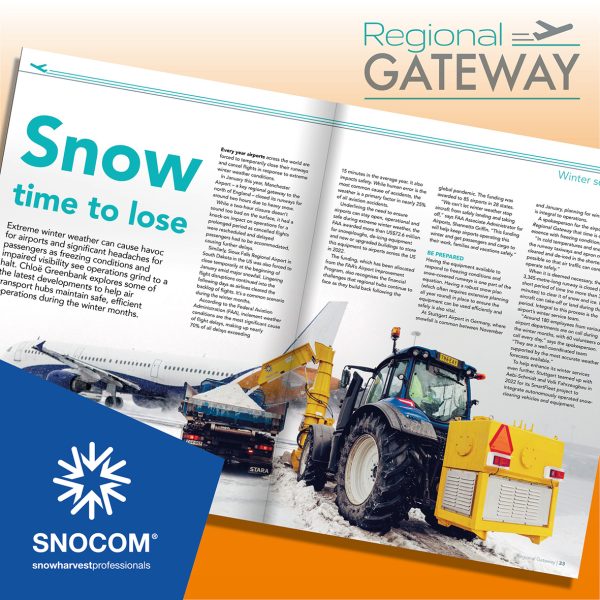Extreme winter weather can cause havoc for airports and significant headaches for passengers as freezing conditions and impaired visibility see operations grind to a halt. Chloë Greenbank explores some of the latest developments to help air transport hubs maintain safe, efficient operations during the winter months.
Every year airports across the world are forced to temporarily close their runways and cancel flights in response to extreme winter weather conditions. In January this year, Manchester Airport – a key regional gateway to the north of England – closed its runways for around two hours due to heavy snow. While a two-hour closure doesn’t sound too bad on the surface, it had a knock-on impact on operations for a prolonged period as cancelled flights were rescheduled and delayed passengers had to be accommodated, causing further delays. Similarly, Sioux Falls Regional Airport in South Dakota in the US was also forced to close temporarily at the beginning of January amid major snowfall. Lingering flight disruptions continued into the following days as airlines cleared the backlog of flights. It’s a common scenario during the winter months. According to the Federal Aviation Administration (FAA), inclement weather conditions are the most significant cause of flight delays, making up nearly 70% of all delays exceeding
15 minutes in the average year. It also impacts safety. While human error is the most common cause of accidents, the weather is a primary factor in nearly 25% of all aviation accidents. Underlining the need to ensure airports can stay open, operational and safe during extreme winter weather, the FAA awarded more than US$72.6 million for snowploughs, de-icing equipment and new or upgraded buildings to store this equipment to airports across the US in 2022. The funding, which has been allocated from the FAA’s Airport Improvement Program, also recognises the financial challenges that regional hubs continue to face as they build back following the
PLAYING BALL
While maintaining smooth, safe operations for both passengers and staff is the primary aim for airports during freezing conditions, environmental requirements push airports to think outside the box when it comes to winter services, says George Mensonides, Managing Director at Snocom. His company has developed the Snowcuber as a revolutionary approach to more efficient and safer snow removal. “With environmental regulations forcing airports to reduce the risk of contaminating local sewerage systems, an increasing number of airports are being banned from disposing of snow into surrounding fields. Subsequently, we are seeing increased demand for the transport of snow to dump sites,” says Mensonides. To help address the issue of snow clearance at airports, Mensonides explains how the Snowcuber works by likening the process to making snowballs. “When you make a snowball, you probably don’t realise it but at that moment you take out all the air – in fresh snow there is around 90% air – to reduce the volume. On the apron, the air is still in the snow. We developed the Snowcuber to essentially replicate that process of forming snowballs.” By compressing the snow and getting rid of the air to make it more compact, the Snowcuber reduces the volume before loading it on to a truck. “This patented technology enables airports to preserve their capacity and reduce the number of dump trucks, as well as movements, operational expenditures and emissions,” says Mensonides. Amsterdam Schiphol Airport and Paris Charles de Gaulle already use the Snowcuber and Snocom is in discussion with Zurich Airport to order two of the snow machines. As Mensonides concludes, it’s no longer just a case of clearing snow and ice as quickly as possible. “Constantly changing weather conditions require airports to consider new innovations that not only help ensure safe, efficient operations but which will also enable them to respond to climate challenges in the future.”
READ whole article
